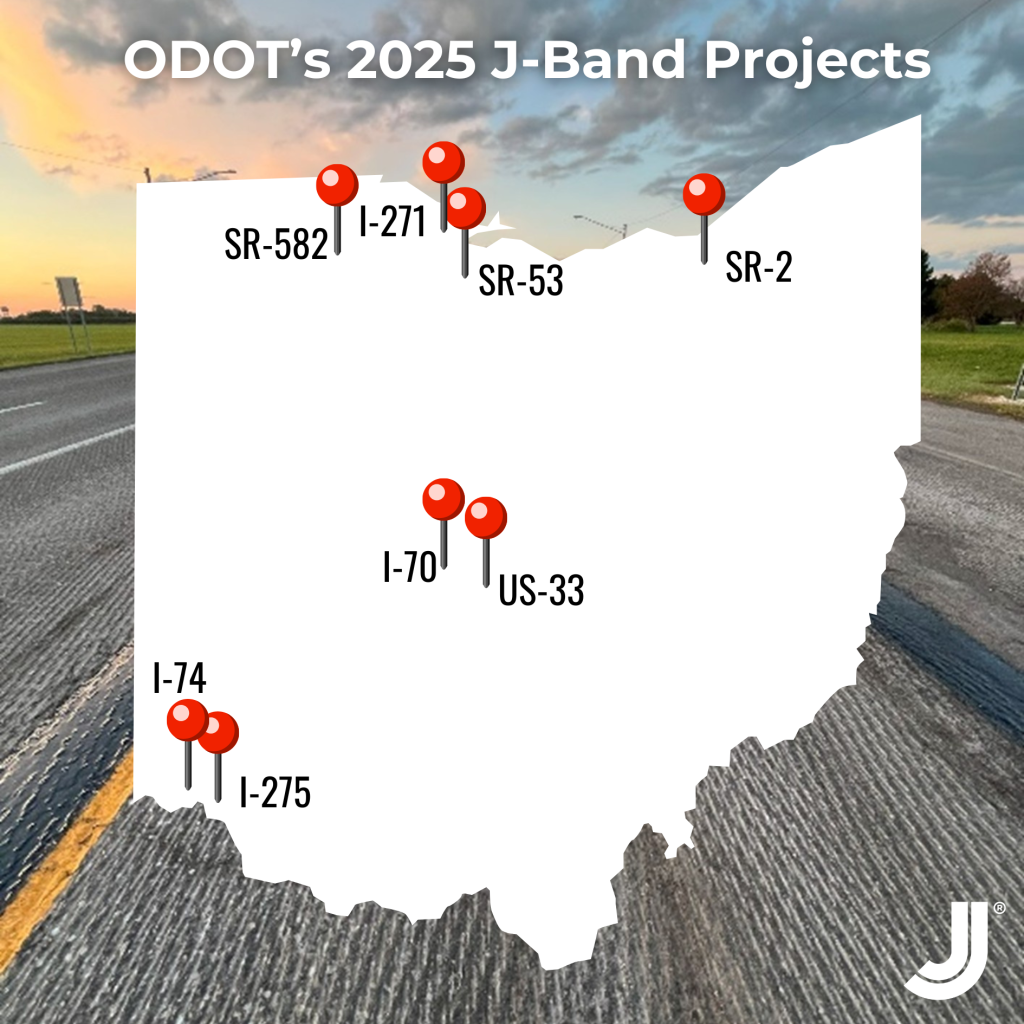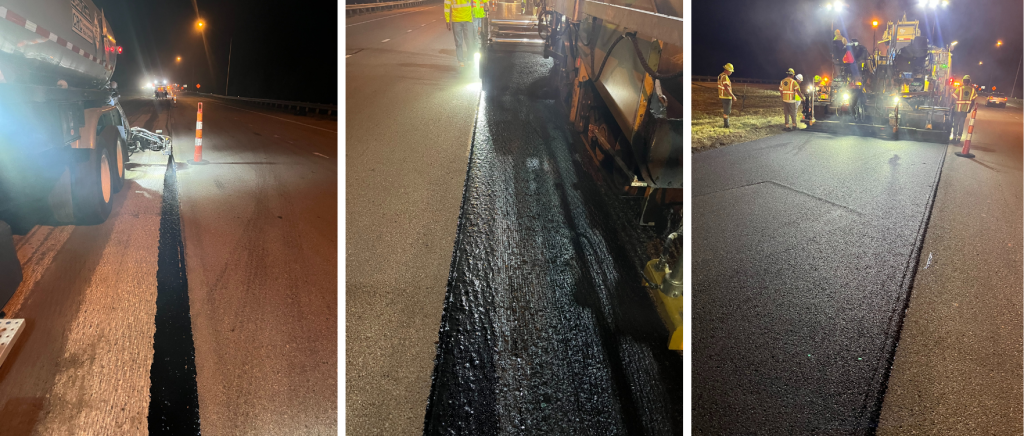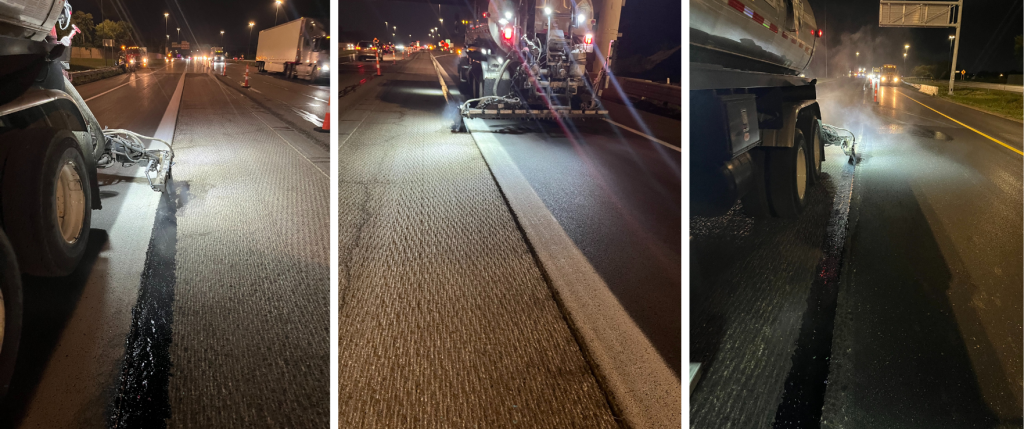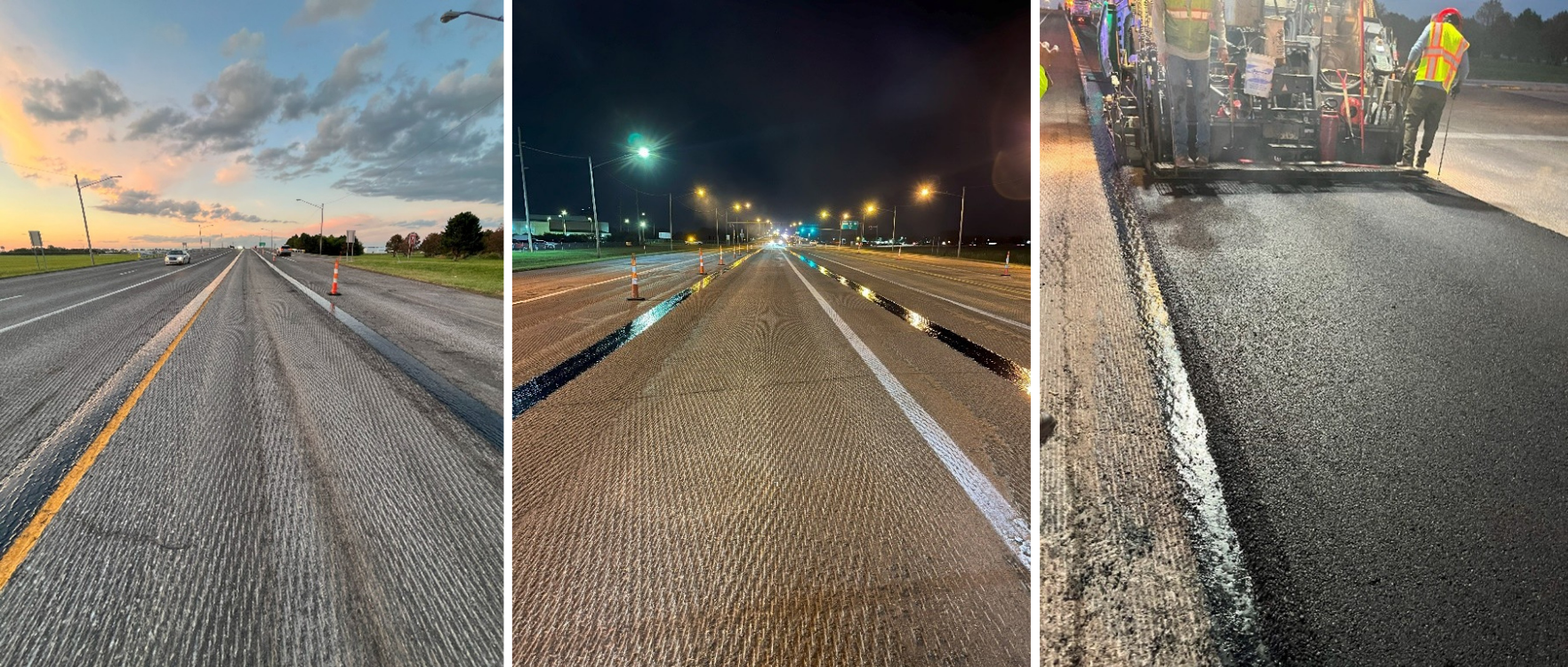Ohio’s Department of Transportation (ODOT) is incorporating an innovative asphalt technology into many of its largest road construction projects this year: Void Reducing Asphalt Membrane (VRAM), also known as J-Band®. This proven material is designed to protect the most vulnerable part of any asphalt pavement—the longitudinal joint—ensuring longer-lasting, safer roads for Ohio drivers.
Leveraging VRAM in ODOT’s Biggest Projects
ODOT first introduced VRAM in 2016, and since then, its adoption has grown steadily across the state. In 2025 alone, nearly 100 miles of VRAM have been applied on major interstate and state route projects. These include:
- I-74 in Hamilton County
- I-70 in Franklin County
- US-33 in Franklin County
- SR-53 in Sandusky County
- SR-582 in Wood County
- I-275 in Hamilton County
- I-271 in Cuyahoga County
- SR-2 in Ottawa County

Specialized Construction Inc. (SCI) served as the subcontracted VRAM applicator for the majority of the projects and Gerken was the applicator for SR-2.

I-74 is a four-lane divided highway from the Indiana-Ohio state line to the north end of I-75 in Cincinnati. In 2025, ODOT made improvements to westbound I-74, including an additional thru lane (full project scope). VRAM was added beneath the lane-to-lane joints for a portion of the project to reinforce the pavement for this major interstate.

I-70 reconstruction is part of ODOT’s “Downtown Ramp Up” project in Columbus, meant to address the biggest safety and congestion problems along the I-70/71 downtown corridor (full project scope). VRAM was applied to protect the inside and outside travel lane joints.

US-33 Widening Project east of Columbus aims to “reduce congestion, improve safety, and regional mobility” (full project scope). Before the new surface course was paved, VRAM was applied, strengthening the vulnerable longitudinal lane joints to avoid future repairs.

SR-53 is a four-lane, divided north-south highway connecting Fremont to the Ohio Turnpike. For high-volume routes like this, VRAM-reinforced joints are smart insurance to reduce and delay future maintenance.
Flexible Construction Conditions
VRAM application can accommodate the various construction phases such as mill-and-fill projects where only one lane is repaved at a time. In this case, state agency specifications states, “When only one-half of the joint is exposed, such as a mill and inlay project, the [VRAM] application shall be applied at one-half the prescribed width and rate and shall be adjacent to the center of the joint, and the vertical face of the cold joint left in place shall also be coated.”
The non-tracking nature of VRAM also allows it to be applied days in advance of paving if necessary, to accommodate times when paving will not occur same day due to logistics or weather constraints. Although not suggested as regular practice… it is a benefit that can be utilized in unique situations as determined by the prime contractor and agency.
How J-Band VRAM Works
J-Band is a heavily polymer-modified asphalt applied beneath the longitudinal joint at time of construction as a “pre-preservation” pavement treatment for roads. Its unique properties allow it to:
- Seal air voids at the joint, reducing water infiltration
- Bond to the cold face of an existing lane until the adjacent lane is paved
- Migrate upward during paving, strengthening the joint and preventing premature failure
It is a solution strengthening city streets, county roads and interstates across North America.
Trusted Beyond ODOT
Since 2020, ODOT has specified nearly 2.3 million feet, or 450 miles, of VRAM. And they are not alone in recognizing VRAM’s value. The Ohio Turnpike’s first VRAM project kicked off in 2025 and municipalities like Toledo and Westerville have been heavy users since 2018 and 2019 respectively. Neighboring states are even a step ahead. The Indiana DOT now includes VRAM as a standard specification for major resurfacing projects, and the Illinois DOT has championed VRAM from the start.
The Bottom Line
By specifying VRAM, ODOT is making a smart investment in durability, safety, and cost savings. Fewer centerline repairs mean less risk for workers and reduced maintenance costs for taxpayers. It’s safe to say, VRAM is a proven solution, trusted across Ohio and beyond.
Resources
- Do you deal with prematurely failing longitudinal joints? We’re here to talk.
- VRAM is proven to provide a 3-5x return on investment. Explore the possibilities with this free ROI Calculator Tool.

